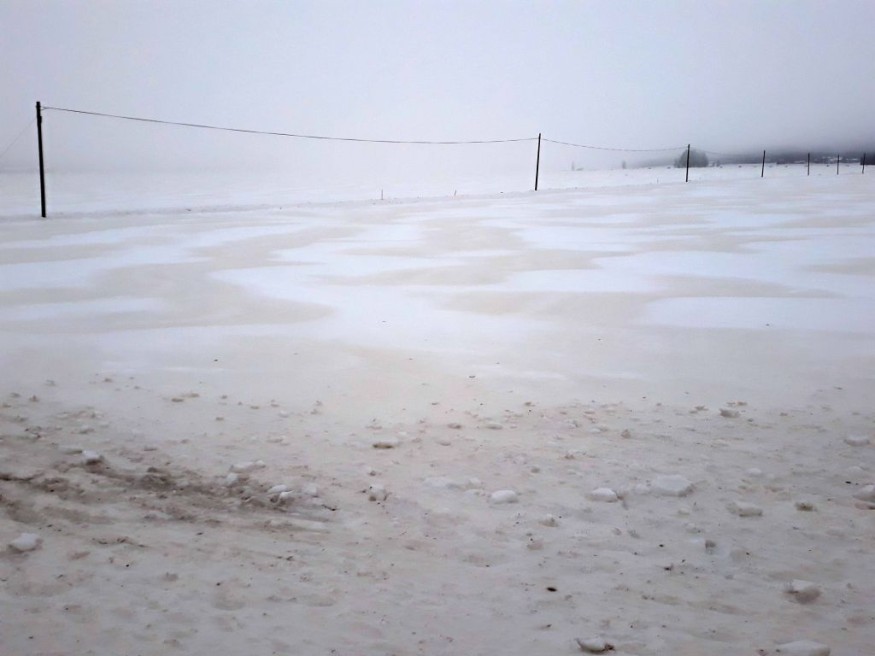Photographer Karim Bouchetata recently captured spectacular images of the ice and snow in the town of Ain Sefra located in northwestern Algeria.
As specified in a Mail Online report, snow has settled on the Sahara Desert's sand, after temperatures fell below freezing.
Ice covered the dune in the unusual phenomenon in the world's largest hot desert, where temperatures of 58 degrees Celsius have been recorded.
Essentially, snow has dropped on the sand in the Sahara Dessert, as described in a Live Science report, after temperatures fell below freezing overnight, generating stunning landscapes.

The Gateway to the Dessert
Overnight, the mercury found in the Algerian town is presently dropping to -2 degrees Celsius. The ice generated striking patterns in the sand after the place saw a scattering of snow unexpectedly fall.
This dusting of snow is the fifth time in over four decades that the town has witnessed snow, with past occurrences in 1979, 2016, 2018, and the most recent, in 2021.
Known as The Gateway to the Desert, Ain Sefra is approximately 3,000 feet above sea level with the Atlas Mountains surrounding it.
Notably, the Sahara Desert covers the majority of Northern Africa, and it has experienced changes in temperature and moisture over the last few hundred thousand years.
The Sahara Desert to Become Green Again in 15,000 Years
The Sahara Desert may be very dry at present, but it is expected to become green again, approximately 15,000 years from now.
Last year, while North Africa was gripped by extreme temperatures during the summer and winter seasons, camels were seen surrounded by snow.
Then, January also saw snow blanket the Saharan dunes in the site which has only seen snow five times, exactly in 42 years. During this time, sheep were seen standing on the ice-blanketed dunes in the Algerian Sahara as the temperature dropped to -3 degrees Celsius.
Unusual in Desert Regions
According to a report from The World News, snow and ice are "unusual in desert regions" although they are not totally unknown.
Temperatures in deserts can fall dramatically overnight although any snowfall is extraordinarily melted early the next day.
In circumstances like those witnessed recently in Algeria, the cold air's high-pressure systems have moved over land to deserts, resulting in lower temperatures.
These so-called "anticyclones" are inclined to reach Saudi Arabia through a clockwise movement from Central Asia, picking up moisture while moving, cooling to form snow.
Not the 1st Time
January of both last year and this year saw snow come specifically to Saudi Arabia and the Sahara although it is not the first time these extraordinarily blisteringly hot spots have been covered in white.
In 2018, Ain Sefra, for the first time in four decades, was dusted in snow. Such a phenomenon has been noted in the town, as mentioned, in 2021, 2018, and 2017, with the most recent recorded snowfall prior to that being in 1979.
Typically, temperatures in the town range between 12 degrees Celsius in January, which is the coldest month, and closer to 40 degrees Celsius in July.
While Saudi Arabia's Asir region had its first snowball in 50 years last January, snow has hit somewhere else in the recent years in the desert kingdom.
Moreover, in 2020, temperatures dropped below freezing in the mountainous northwestern regions of the country which include Tabuk, as a blizzard urged officials to caution residents to keep warm. One year earlier, in April, snow fell, according to reports.
Report about the 2021 snow occurrence in the Sahara Desert is shown on Analysis TV's YouTube video below:
RELATED ARTICLE : Sahara Desert Experienced Snow For the 4th Time in 42 Years!
Check out more news and information on Environment & Climate on Science Times.












